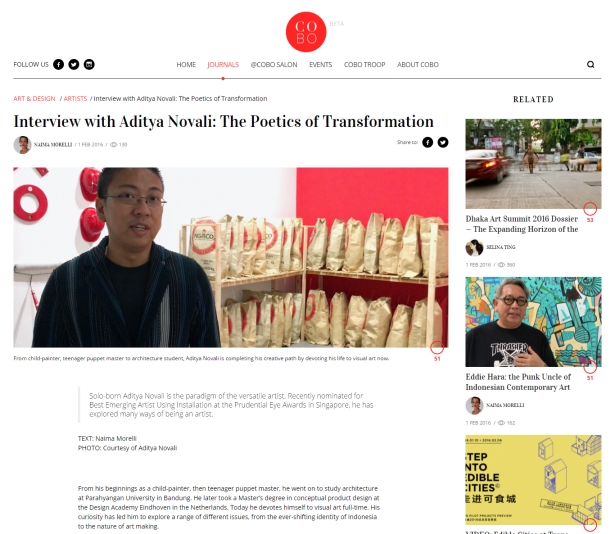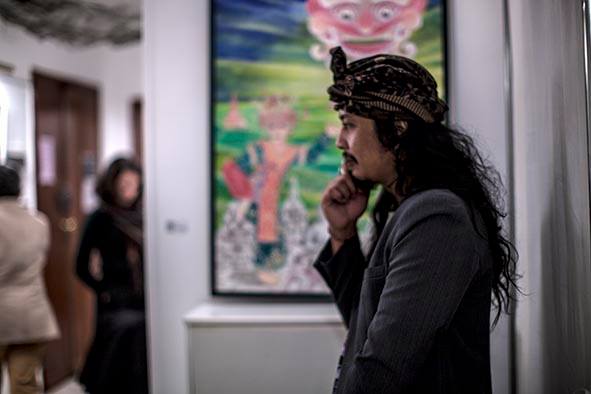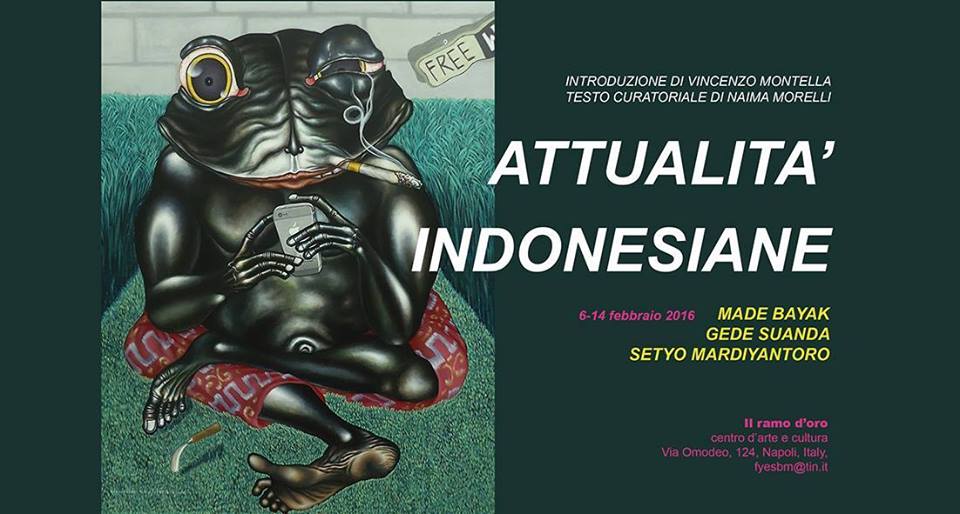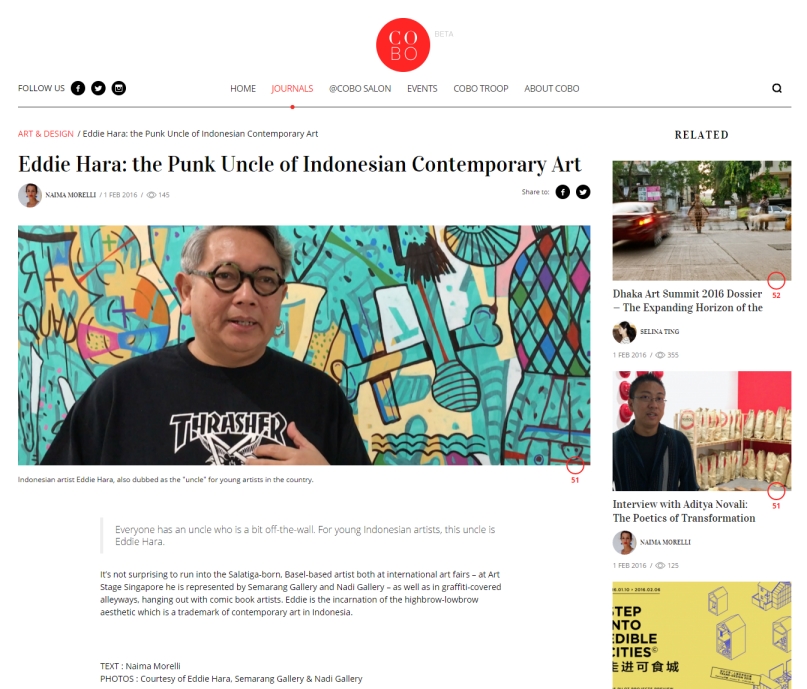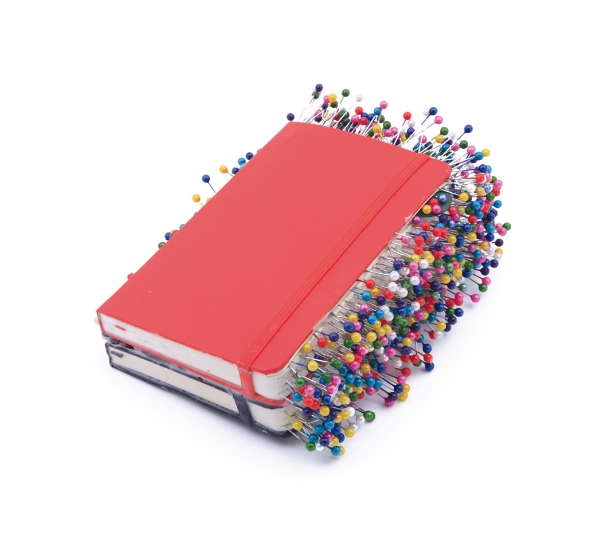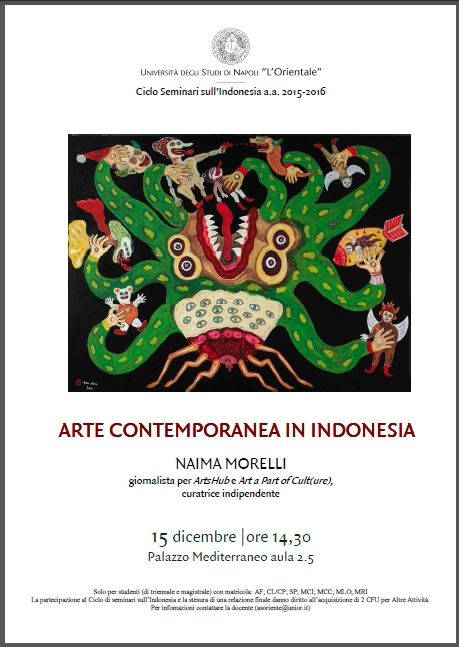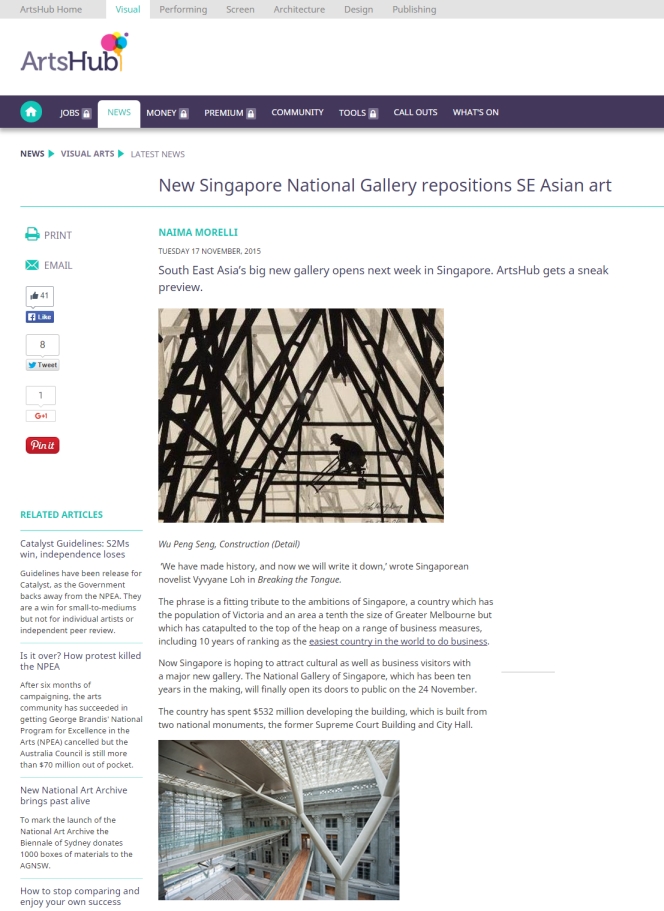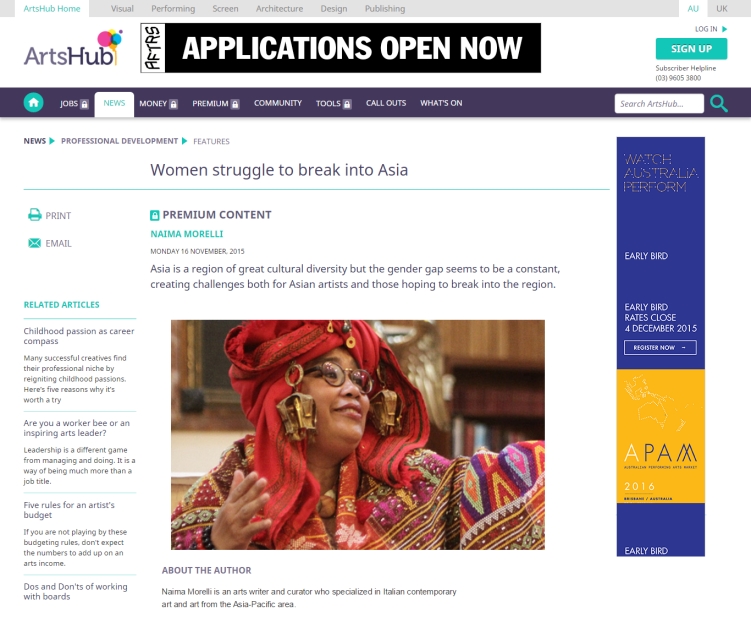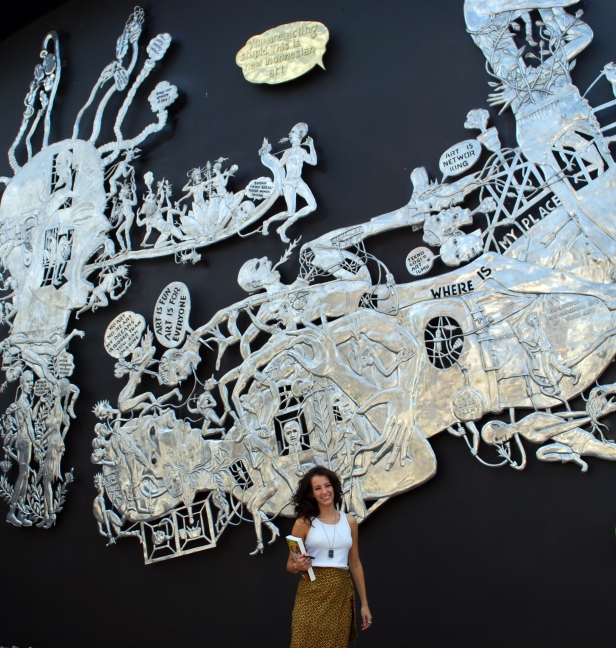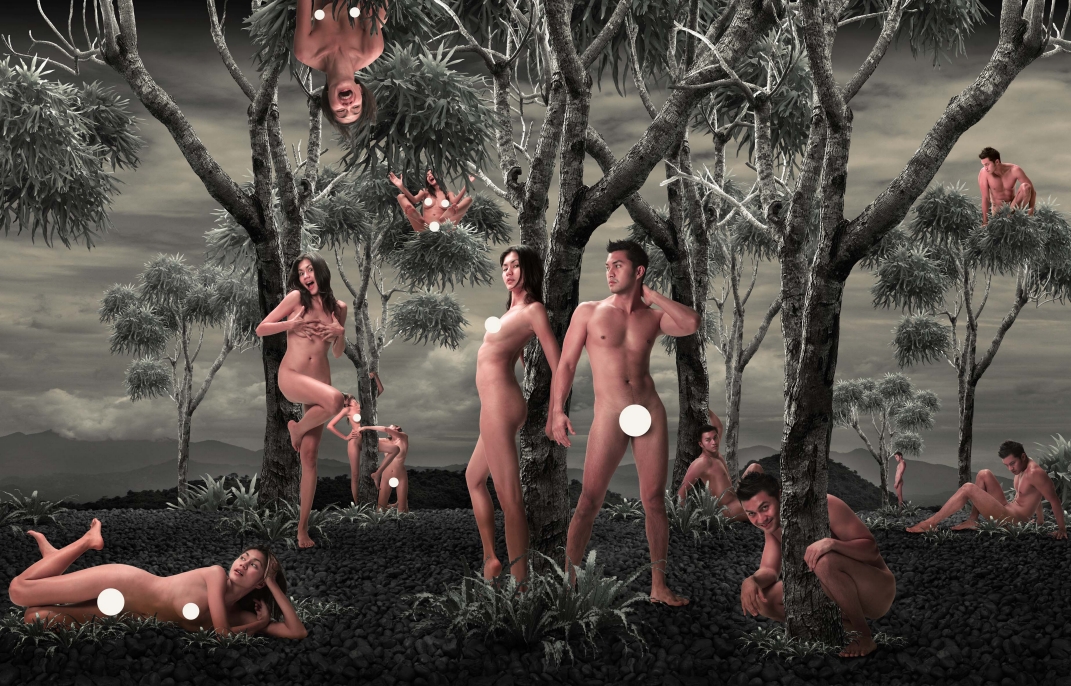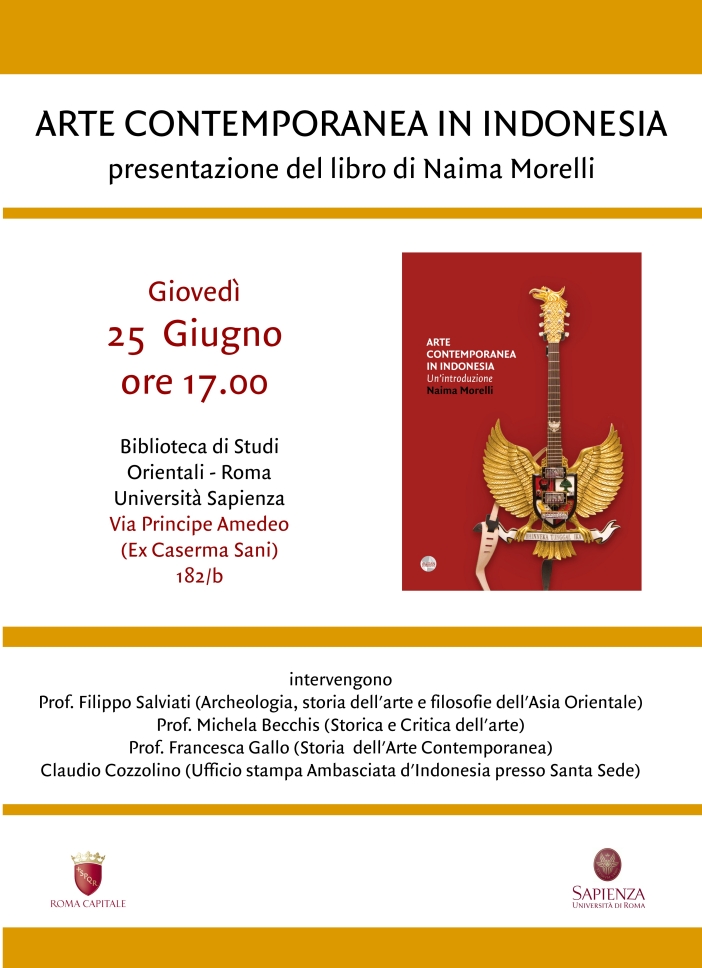
Thursday, June 25 at 5pm the Library of Oriental Studies at Sapienza University of Rome will host the presentation of the book “Arte Contemporanea in Indonesia, un’introduzione” by Naima Morelli. The presentation will be introduced by Filippo Salviati, professor of Eastern Asia archeology, art history and philosophies, with the partecipation of Michela Becchis, art critic and art historian, Francesca Gallo, professor of contemporary art, and Claudio Cozzolino, Press Office at Embassy of Indonesia to the Holy See.
The book is an introduction to Indonesian contemporary art, which now occupies a prominent place in the international art scene, from both a market and cultural standpoint. Placing itself in the dialectic between the global and the local, the book analyzes how in Indonesia the cultural, artistic, political and social context have influenced four generations of artists. The author guides the reader in the contemporary art places in Yogyakarta, Jakarta, Bandung and Bali, looking for the answer to the question: is there really something called Indonesian contemporary art?
Read More
